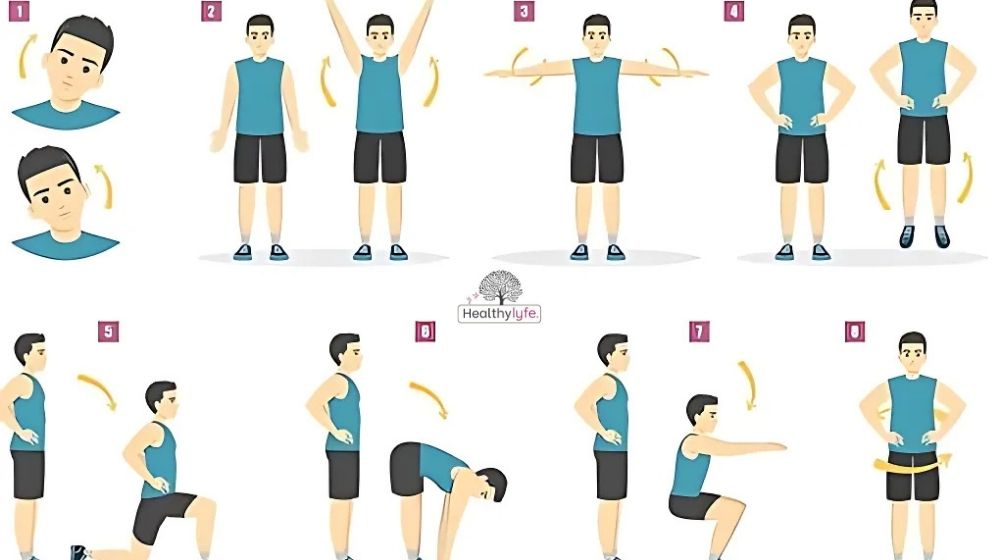Learn everything about full body workouts—benefits, beginner tips, advanced techniques, and diet plans to boost muscle growth and fat loss.
Introduction
A full body workout is one of the most efficient and balanced ways to train your entire body in a single session. Whether you’re a beginner or an experienced fitness enthusiast, a full body routine offers benefits like improved strength, fat loss, muscle gain, and overall fitness. In this article, we’ll break down everything you need to know about full body workouts, including what they are, their benefits, how to get started, and how to fuel your body with the right nutrition.
What is a Full Body Workout?
Definition of a Full Body Workout
A full body workout is a fitness routine designed to target all major muscle groups in one session. Unlike split routines, which focus on specific muscle groups (like legs, back, or chest) on separate days, full body workouts engage multiple muscle groups in each session. These workouts typically include compound movements, which involve multiple joints and muscle groups, offering an efficient way to build strength, endurance, and muscle mass.
Key Components of a Full Body Workout
To create an effective full body workout, you’ll want to include a mix of:
- Compound exercises: These are exercises like squats, push-ups, and deadlifts that engage multiple muscle groups at once.
- Isolation exercises: These target specific muscles, like bicep curls or tricep extensions, to ensure that no muscle group is left behind.
- Cardio exercises: Running, cycling, or jump rope can increase heart rate and burn calories, complementing your strength training.
By combining both strength and cardiovascular exercises, full body workouts provide a balanced approach to fitness.
Benefits of a Full Body Workout [1]
Time Efficiency
One of the biggest advantages of a full body workout is its time efficiency. Most people lead busy lives and don’t have the time to hit the gym every day. With full body workouts, you can train your entire body in as little as three sessions per week, reducing the time commitment while still achieving fantastic results.
This time-saving approach allows you to target all muscle groups within one workout session, ensuring that no area of your body is neglected.
Muscle Growth and Fat Loss
Full body workouts help with muscle growth and fat loss simultaneously. Engaging multiple muscle groups in one session boosts your metabolism, which leads to a greater calorie burn both during and after the workout. This calorie burn, paired with strength-building exercises, can help you shed fat while building lean muscle.
As you continue to increase intensity, your muscles will grow, and you’ll see improvements in both strength and physique over time.
Balanced Fitness
Another key benefit of full body workouts is the balance they provide. Instead of focusing on one muscle group at a time, a full body workout ensures that all major muscle groups are worked evenly. This approach reduces the risk of muscle imbalances, which can occur if you only focus on certain areas of the body, like the chest or arms.
A balanced fitness regimen leads to better overall strength and more well-rounded athletic performance.
Improves Flexibility and Endurance
When you do full body workouts that involve a variety of exercises, you’re not just building strength but also improving your flexibility and endurance. Movements like lunges, squats, and stretches target the muscles and joints, increasing your range of motion. The diversity in exercises also helps improve cardiovascular endurance, making you fitter overall.
Full Body Workout for Beginners
How to Get Started
If you’re new to full body workouts or exercise in general, it’s important to start slow and focus on the basics. Begin with bodyweight exercises, like squats, push-ups, and planks, to build strength and stability before incorporating heavier weights.
Start with 2-3 full body workouts per week, allowing at least one rest day in between to give your muscles time to recover. Keep your sessions relatively short (30-45 minutes) and focus on perfecting your form to avoid injury.
Best Exercises for Beginners
Here are a few beginner-friendly exercises to include in your full body workout:
- Squats: A great lower body exercise that targets your quads, hamstrings, and glutes.
- Push-ups: Perfect for strengthening the chest, shoulders, and triceps.
- Planks: An excellent exercise for building core strength.
- Glute Bridges: Aimed at working your glutes and lower back muscles.
These exercises work multiple muscle groups, and you can do them with just your bodyweight, making them accessible to most fitness levels.
Advanced Full Body Workout Techniques
High-Intensity Interval Training (HIIT)
Once you’ve built a solid foundation, you can incorporate more advanced techniques like High-Intensity Interval Training (HIIT). HIIT alternates short bursts of intense exercise with brief rest periods. It’s a great way to push your limits, increase calorie burn, and improve cardiovascular fitness.
For example, you might alternate between 30 seconds of jump squats, burpees, or sprints followed by 30 seconds of rest. This method helps to elevate your heart rate quickly and burns a significant amount of calories in a short period of time.
Progressive Overload in Full Body Workouts
To continue making progress, you’ll need to apply progressive overload, which means gradually increasing the intensity of your workouts over time. You can do this by:
- Increasing the weight you lift.
- Adding more sets or reps.
- Reducing rest time between exercises.
By continually challenging your body, you’ll stimulate muscle growth and strength development. Progressive overload is essential for avoiding plateaus and ensuring continuous improvement.
Diet Plan for Full Body Workout
Importance of Nutrition
Exercise alone isn’t enough to see great results—you need to fuel your body with the right nutrients to support your training. A well-balanced diet helps provide the energy you need for your workouts and aids in muscle recovery afterward. The right nutrition can also help you reach your fitness goals faster, whether that’s losing fat or gaining muscle.
Macronutrient Breakdown
To optimize your full body workout, you need to focus on three main macronutrients:
- Proteins: Protein is vital for muscle repair and growth. Aim for lean protein sources like chicken, fish, eggs, or plant-based alternatives like tofu and legumes.
- Carbohydrates: Carbs provide the energy needed for high-intensity exercise. Include complex carbs like whole grains, sweet potatoes, and vegetables.
- Fats: Healthy fats play a role in hormone production and joint health. Sources include avocados, nuts, seeds, and olive oil.
A balanced diet consisting of these macronutrients will support muscle growth, energy levels, and overall fitness.
Timing Your Meals for Optimal Performance
When you’re engaging in regular full body workouts, meal timing is important. Here’s a general guideline:
- Pre-workout meal: Eat a balanced meal 2-3 hours before working out, with a mix of protein and carbs for energy.
- Post-workout meal: Within 30 minutes to an hour after working out, consume a meal or snack that contains both protein and carbohydrates to aid muscle recovery.
Proper meal timing ensures that you have the energy for your workout and gives your body the nutrients it needs to repair and grow afterward.
Calories: Burn or Gain with Full Body Workout?
How Full Body Workouts Impact Calorie Burn
Full body workouts are an excellent way to burn calories. Because they engage multiple large muscle groups, these workouts elevate your heart rate and boost your metabolism, even after the session is over. This is known as the afterburn effect, where your body continues to burn calories at a higher rate during recovery.
Whether you’re aiming for fat loss or simply maintaining your current weight, full body workouts can help you create a calorie deficit, leading to fat reduction.
Can Full Body Workouts Help You Gain Muscle?
Yes, full body workouts can also be effective for gaining muscle, especially when you incorporate progressive overload and focus on increasing the intensity of your workouts over time. By using heavier weights, more resistance, or adding sets and reps, you’ll challenge your muscles enough to stimulate growth.
Full body workouts are particularly effective for gaining lean muscle, as they work multiple muscle groups in a single session, allowing for more frequent training and recovery periods.
Conclusion
A full body workout is a highly effective way to achieve balanced fitness, combining strength training, cardiovascular exercise, and flexibility into one routine. The benefits are clear: full body workouts save time, help you burn fat, build muscle, and improve overall fitness. Whether you’re a beginner or an advanced athlete, a well-structured full body workout can help you reach your fitness goals. Pair your workouts with proper nutrition, rest, and consistency, and you’ll be on your way to a stronger, leaner, and healthier you.
FAQs about Full Body Workout
How often should I do a full body workout?
For most people, 2-3 full body workouts per week is ideal. This gives your muscles enough time to recover and rebuild, which is crucial for progress.
Can I do a full body workout every day?
It’s not recommended to do full body workouts every day. Your muscles need time to recover, and overtraining can lead to injury or burnout. Stick to 2-3 sessions a week, with rest days in between.
What are the best exercises for a full body workout?
Some of the best exercises for a full body workout include squats, deadlifts, push-ups, planks, lunges, and rows. These compound movements engage multiple muscle groups and offer excellent results.
How many calories should I eat with a full body workout routine?
The number of calories you should eat depends on your fitness goals. If you’re trying to lose weight, aim for a calorie deficit. If you’re trying to gain muscle, you’ll need to eat slightly more than your body burns. A good starting point is to calculate your daily calorie needs and adjust based on your progress.
Is a full body workout good for weight loss?
Yes, full body workouts are great for weight loss. They burn a significant amount of calories and help increase metabolism, even after the workout is over. Regular full body training can help you achieve and maintain a healthy weight.
Disclaimer: The information provided in this article is for general informational purposes only and is not intended as medical advice. Always consult with a healthcare professional or certified fitness trainer before starting any new exercise.
By healthylyfe


